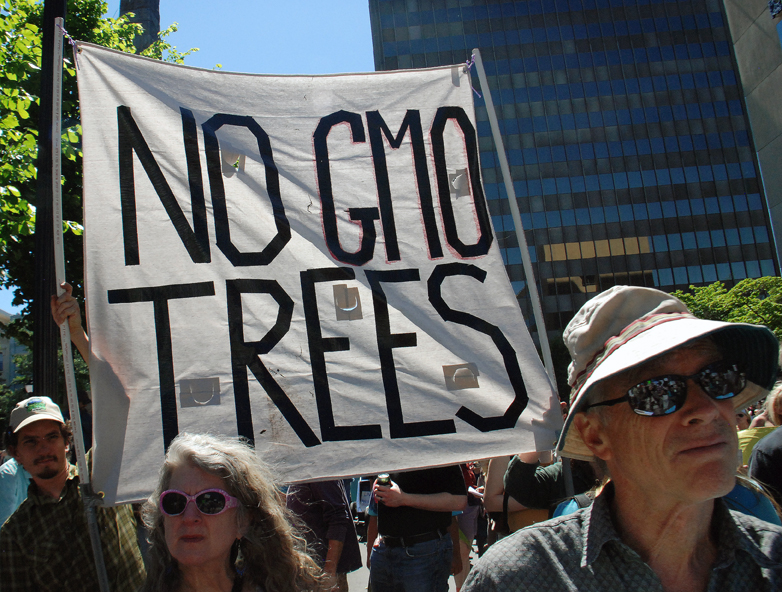On November 14th, Syracuse.com published a response by Dr. Martha Crouch to a story they ran about SUNY ESF’s work on genetically engineered chestnut trees. Her response led to a very active conversation online. Here we’re publishing the full response, which was slightly cut and edited by Syracuse.com, the online source of the Syracuse Post-Standard.
Imagine this headline: “Bald eagles genetically engineered with pigeon genes to withstand toxic pesticides ready for release back into wild, say researchers.” Or, “Scientists genetically engineer endangered Florida panthers with synthetic DNA to resist deadly virus.”
Many conservationists would feel uneasy about interfering with wild animals in such an extreme way – changing their very nature, their genetic make-up – in an attempt to save them from human-caused decline. There would be widespread discussion and soul-searching about whether technologists were overstepping their bounds with little knowledge of the long-term consequences.
The first genetically engineered (GE) wild organisms designed to spread in nature are scheduled to debut in a few years, if forestry researchers at SUNY-Syracuse have their way. Drs. Powell and Maynard have just announced their intention to seek regulatory approval of American chestnut trees genetically engineered with a wheat gene that provides some resistance to chestnut blight, at least in experiments. Their goal is to have 10,000 GE trees ready to put into the hands of the public and out into forests as soon as they get the OK.
As a biologist, I think this project is moving far too fast. Details in their scientific studies raise serious concerns. The one wheat gene these researchers want to go ahead with is unproven [for genetic engineering] – there is no track record of success even in annual crop plants, much less in a long-lived tree inhabiting a complex forest (American chestnuts can live several hundred years). And any wily pathogen is likely to defeat resistance based on a single gene rather quickly. Prototype trees such as this should be confined to test plots, not let loose.
The dream of Drs. Powell and Maynard to release fully fertile GE American chestnuts into eastern forests could turn into a nightmare if something goes wrong. Such trees will be almost impossible to recall once they spread and start crossing with wild trees.
Importantly, we need more public debate and participation in the decision. American chestnut trees are every bit as wild as eagles and panthers. We should take meddling with their nature just as seriously.

